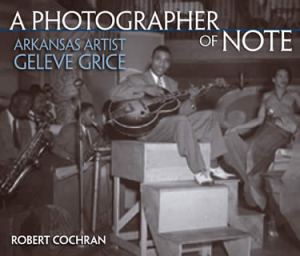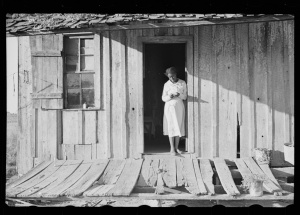The final post in my Tuesday Tips series on Researching Photographers Working in the South, part 7, covers the state of Arkansas. For a background discussion of photography in Arkansas, see the Encyclopedia of Arkansas entry “Photography” at http://tinyurl.com/lo8q6yu
 Panorama of Arkansas River and Fort Smith, Arkansas, by Hagerty & Zeller; LC Prints & Photographs PAN US GEOG – Arkansas no. 13
Panorama of Arkansas River and Fort Smith, Arkansas, by Hagerty & Zeller; LC Prints & Photographs PAN US GEOG – Arkansas no. 13
A list of 19th and early 20th century Arkansas photographers based on images at the Arkansas History Commission and entries in various city and state directories was compiled by D. L. Ewbank . This 88-page list, which gives studio addresses as well as some quotes from photographers’ advertisements, is at http://tinyurl.com/pxz5cdb
The Arkansas History Commission is the official state archives of Arkansas. Search their www.ark-ives.com and CARAT (my new favorite acronym, it stands for “catalog of Arkansas resources and archival treasures”) for a link their Photographs collection, as well as a link to the 88-page list of photographers. Two later 20th century collections are searchable here, the Shrader Negatives collection, and the Thomas Harding Photographs.
Russian immigrant Gustave Joseph Shrader (1870 – 1946) began as photographer in Arkansas as early as 1910. He was eventually joined by his son Buddy. Photographs of the studio’s exterior, interior, and a studio invoice are here, in addition to their images taken for Arkansas businesses government, schools, and organizations. A good biography of Shrader by Lynn Ewbank is on (you guessed it) the Encyclopedia of Arkansas http://tinyurl.com/kftowhb
Thomas Harding was a former architect who began a photography studio in Little Rock after his WWII military service. He sold out in 1964 and moved to New York where he was associated with the Bachrach Studio. He ran another Little Rock photo studio from 1970 to 1982, when he retired. He pursued pinhole photography after retirement, and also published two books of photographs before his 2002 death. He too, has a biography and bibliography on the Encyclopedia of Arkansas: http://tinyurl.com/nxdjdwg
A now well-known photographer mentioned in the Encyclopedia of Arkansas “Photography” article is Mike Disfarmer, born Michael Myer. He was a rather eccentric man who documented life around Heber Springs, Arkansas for over forty years, but Disfarmer’s photographs were not recognized as anything “special” until about fourteen years after his death – he was found dead in his studio in 1959. Glass negatives he left were published for a time in the The Arkansas News, and these images were eventually seen by an editor of Modern Photography. Within a few years a book on Disfarmer’s work was published.
Disfarmer: Heber Springs Portraits, 1939-1946 (Addison House, 1976; 2nd edition Twin Palms, 1996) was the first of what would be several monographs published on Mike Disfarmer and his photographs. The Encyclopedia of Arkansas article on Mike Disfarmer, at http://tinyurl.com/m784zqv includes a bibliography. Check your local library catalog, or WorldCat, for these books.
In 2004, a small group of prints, from what were thousands of “penny portraits” Disfarmer took of his fellow townspeople, was sold to a New York collector. Suddenly, any of the portraits Disfarmer took were worth up to $30,000 per print. Reproductions are still being sold online.
The sixty-year career of photographer Geleve [pronounced Gee-lee-vee] Grice of Pine Bluff, Arkansas, is documented in Robert Cochran’s book “A Photographer of Note: Arkansas Artist Geleve Grice” (U. of AR Press, 2003). Grice photographed the daily life of the African-American community of segregated Pine Bluff, as well as the visiting entertainers and important people who came to Pine Bluff, including T-Bone Walker, Martin Luther King, Jr., Ray Charles, and Harry Truman.
You can read Robert Cochran’s earlier article on Grice online via JSTOR in the Winter 1999 issue of The Arkansas Historical Quarterly. The JSTOR site includes the 1942-2009 issues of The Arkansas Historical Quarterly. If you want to access that issue, or other publications it includes, it is simple it to get a free MyStor subscription at http://www.jstor.org/
See again the Encyclopedia of Arkansas for a biography of Grice (1922-2004) http://tinyurl.com/lsfybzm Additional information on Grice, with examples of many of his photographs, is located on The Old State House site at http://tinyurl.com/jvuq2pf Although a video interview with Grice is also found on that site, an extended version of the same interview is located on YouTube http://tinyurl.com/le3zefv
A book related to Grice and his community is African Americans of Pine Bluff and Jefferson County by Donna Cunningham & Jimmy Cunningham, Jr. (Arcadia Publishing, 2013).
The Old State House Museum also includes an online exhibit on Ernie Deane (1911-1991), who as of 1956 wrote the “Arkansas Traveler” column for the Arkansas Gazette. He photographed the people, places and events he covered for forty years, and his photograph collection is now housed at the Arkansas History Commission: http://www.oldstatehouse.com/ernie_deane/
If you are interested in Depression-era photographers, you will find images and documentation on the out-of-state photographers who came to Arkansas during the Depression years within the Library of Congress’s Farm Security Administration photograph collection: http://www.loc.gov/pictures/collection/fsa/
Daughter of a sharecropper in the doorway of her home, Ozark mountain area of Arkansas, by Ben Shahn, Oct. 1935; FSA/OWI Collection, LC Prints & Photographs, LC-USF33-006106-M5
I am aware of only one photographer originally from Georgia, with ties to Arkansas. Norman E. McLeod was born in Sumter County, Georgia, near Americus, on 29 November 1853. His family eventually moved to Florida, where he learned photography. He attended what is now the University of Georgia, in 1875-76, then traveled and did a variety of things. He eventually moved to Hot Springs, Arkansas in 1888. A 1904 biography of him, created while he was still living, is on Genealogy Trails at http://genealogytrails.com/ark/garland/bios.html
In Hot Springs McLeod owned and operated a place called Happy Hollow. It began as a photo studio, but it gradually became an amusement park, which even included a zoo. He sold the park in 1908, and photographer David W. Anselberg took over the Happy Hollow photo studio. Norman McLeod continued to work as a photographer until shortly before his death on 5 Oct. 1915. Read more about Norman McLeod and Happy Hollow on the Encyclopedia of Arkansas site: http://tinyurl.com/m7nb2a9
The park was known for its humorous images, and McLeod painted backdrops inside of or against which his customers could be photographed. Part of an inscription he put on the back of some of his photographs is “McLeod, The Wild West Photographer….A picture from Happy Hollow that does not bear the name of McLeod, would be a disappointment to the friend to whom it is sent.” Some of the photographs taken by McLeod are found on the Rootsweb site of Hot Springs, Arkansas’s The Melting Pot Genealogical Society http://rootsweb.ancestry.com/~armpgs/happy_hollow.htm Below is a postcard photo of the photographer, from that site:
“Famous artist of Happy Hollow,” postcard of Norman McLeod, Hot Springs Arkansas, bought on the John Lammers and family trip to Happy Hollow; photo courtesy of Shanna Lammers
In addition to the Pine Bluff book mentioned above, there are many other books about the state of Arkansas published by Arcadia. One or more of these may relate to the Arkansas photographer you are researching. Those books are found at http://www.arcadiapublishing.com/state/Arkansas
Other books that may be of use in your search include the second volume of Arkansas Made: a Survey of the Decorative, Mechanical, and Fine Arts Produced in Arkansas, 1819-1970 (U. of AR Press, 1991) by Swannee Bennett and William B. Worthen. This volume covers the introduction and spread photography. There is an essay in the book on Photography in Arkansas, and also a Biographical Appendix of Arkansas Photographers covering 128 early photographers.
I have not used this book. The above information comes from a book review I found on JSTOR, and from the description on page 117 of the revised 2nd edition of Photographers, a Sourcebook for Historical Research, edited by the late Peter E. Palmquist (Nevada City, CA: Carl Mautz Publishing, 2000). This is a favorite book of mine and a valuable resource I will write more on in a later post.
There will probably be other items related to “your photographer” on Arkansas History Commission’s http://www.ark-ives.com/ within County Records, which includes court, tax, and marriage records as well as deeds. This site also has a biographical index, called Biodex. You can order copies of any biography you find there of interest.
And don’t forget the useful newspapers and how important they can be in the search for information on our Southern photographers.
The city of Gentry is located in northwestern Arkansas, about 10 miles from the Oklahoma border. The Gentry Courier Journal (1896-1949) is completely searchable and images of pages are provided (this site is operated by Newspaper Archive and you must sign up for a “free membership” in order to see your results and images) – here are my results for the simple keyword of “photographer” on that site: http://tinyurl.com/mp3glaj
The newspaper in this group for January 15, 1909 has a wonderful article and illustration on “The Bird Photographer” or the Pigeon Camera, utilizing a camera attached to a carrier pigeon and its possible military use. Great fun!
The 1819 to 1850 Arkansas Gazette is supposedly available via the site Arkansas Ties: http://www.arkansasties.com/ but this site is undergoing changes through early 2014, and the newspaper has moved. It is now seems to be at http://tinyurl.com/kfeb6a8
I do not understand how this site is supposed to work because it seems to be mounted on a forum and is not an accessible database. The newspapers located here, 1819 -1930, may eventually be searchable as a database – as the newspaper run it purports to be.
This Arkansas Ties site is listed in the December 2013 Family Tree article on state websites – although you can perform limited searches, it is a shame this is not yet a very useful source. This is only my opinion, of course, and you may have more success with the site than I have had.
There are thus far no Arkansas newspapers included in the free Library of Congress newspaper site Chronicling America, which is a shame. Other than the Gentry, Arkansas newspaper I mentioned above, other online Arkansas newspapers are only available via paid subscription. Subscription site Genealogy Bank, in addition to having several other Arkansas newspapers, has the Arkansas Gazette 1842-1908. There are other Arkansas newspapers to be found on the subscription site NewspaperArchive.
With that bit of news (pun intended), I conclude this post and this series with my continued good wishes for your success at all your research endeavors – what I call your Hunting & Gathering. In case we do not “see” each other soon, my best wishes for your happy holidays!
© E. Lee Eltzroth and Hunting & Gathering, 2013. Unauthorized use and/or duplication of this material without written permission from this blog’s author is prohibited. The piece can be re-blogged, and excerpts and links may be used, provided that full and clear credit is given to E. Lee Eltzroth and Hunting & Gathering, with appropriate and specific direction to the original content.


